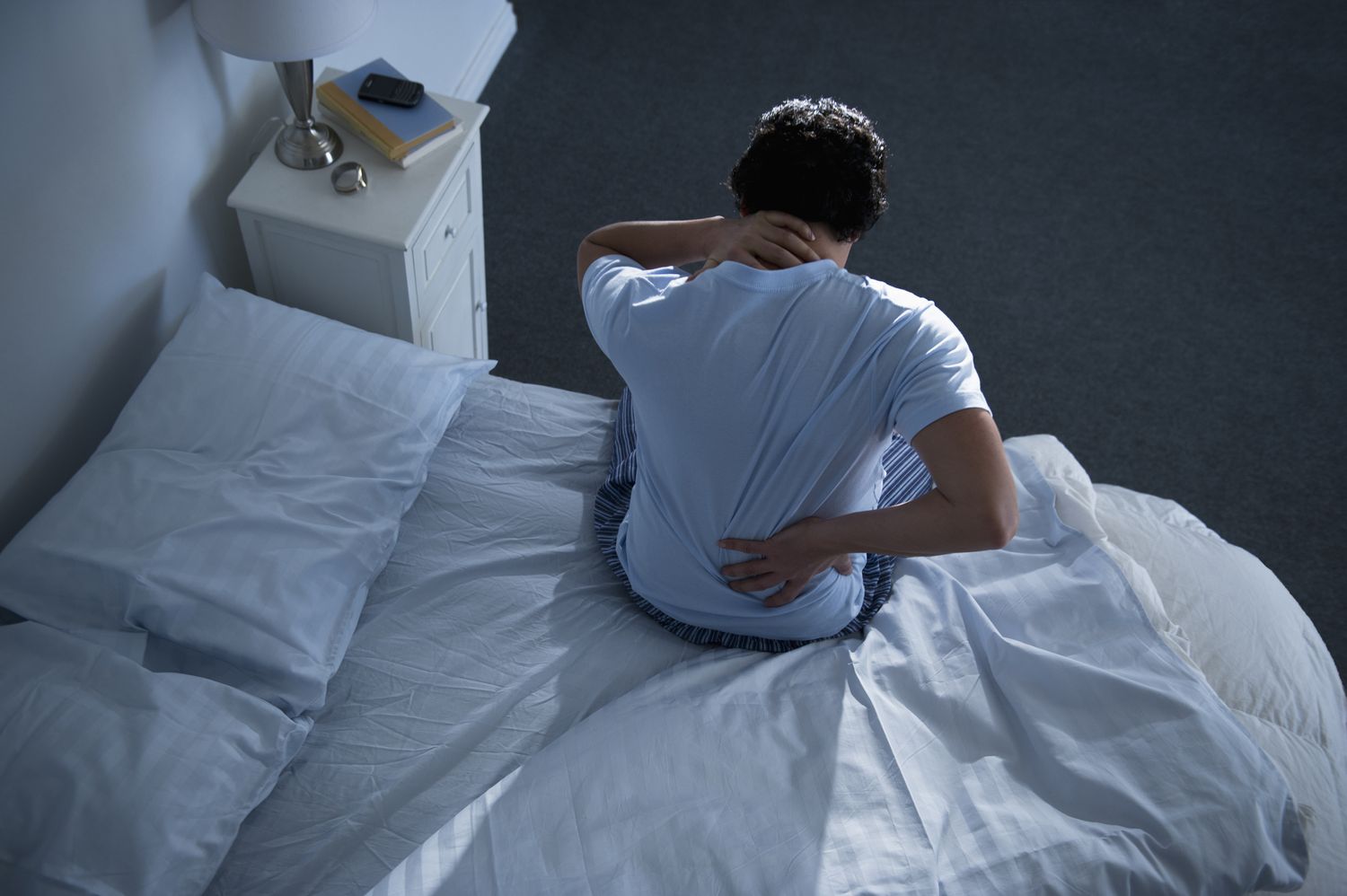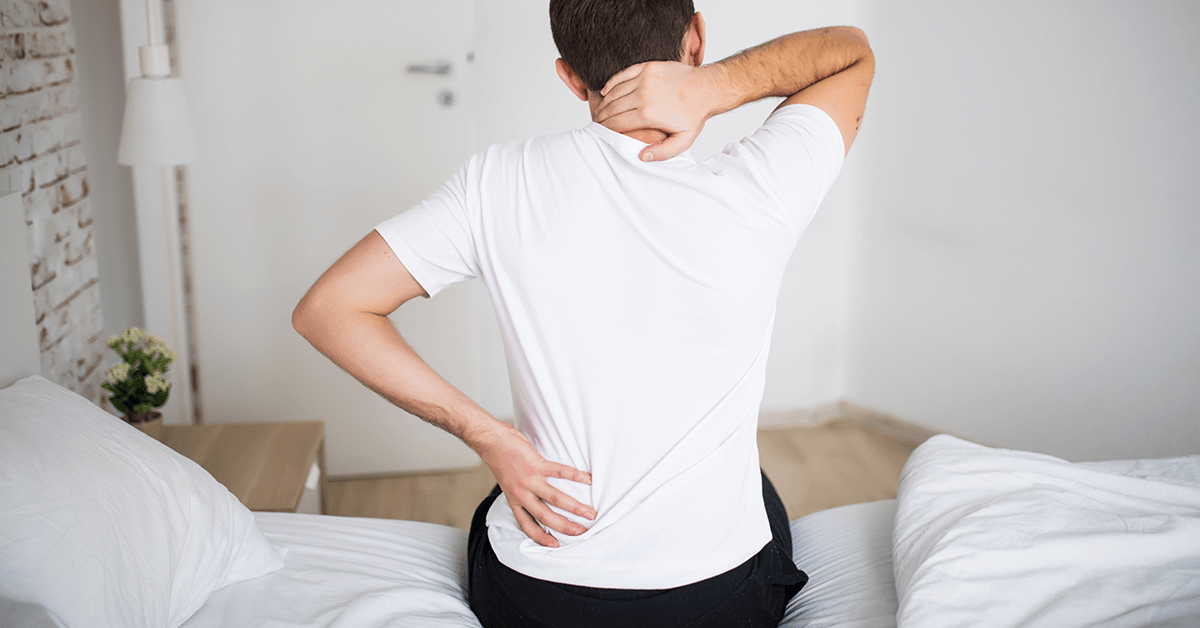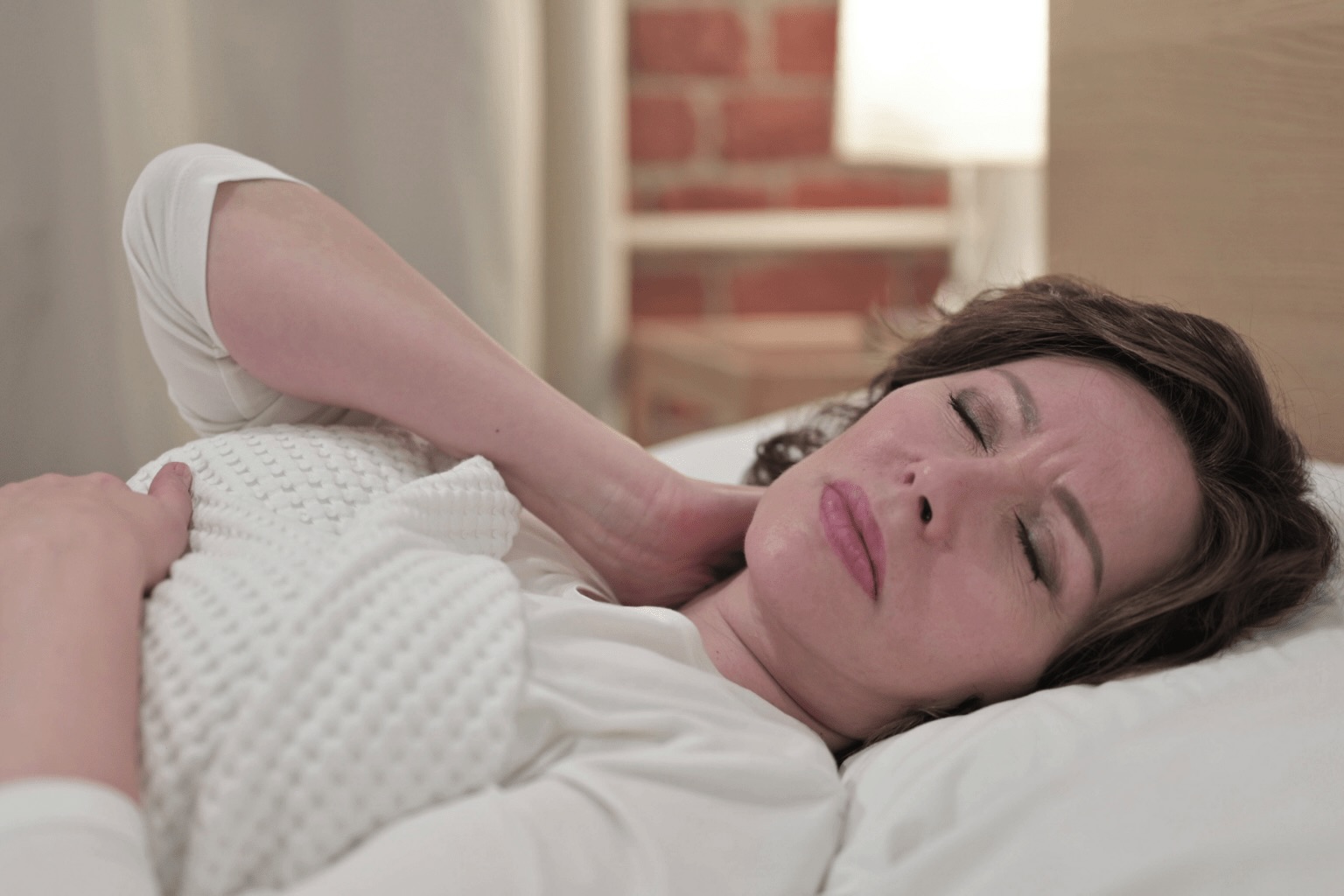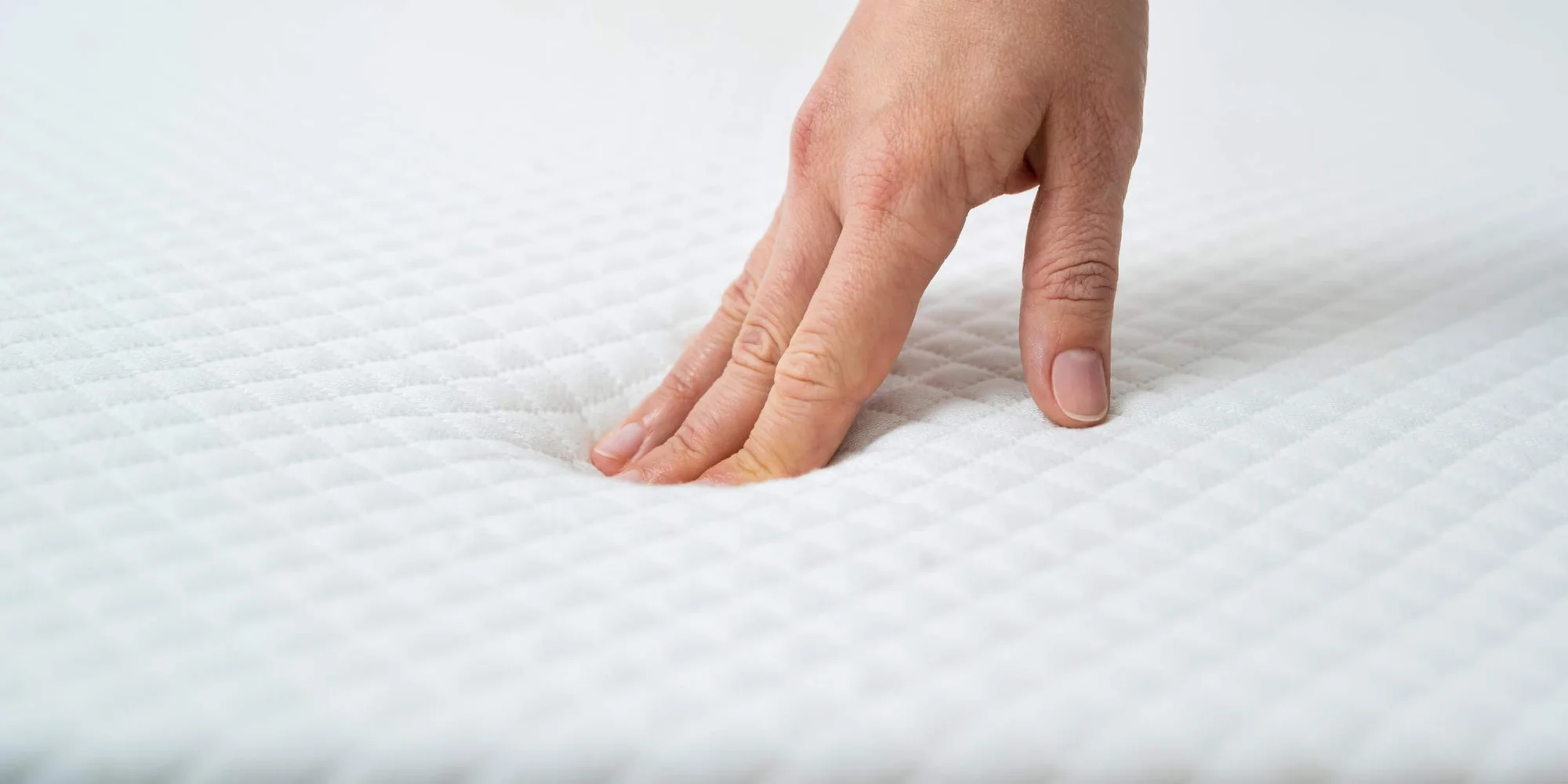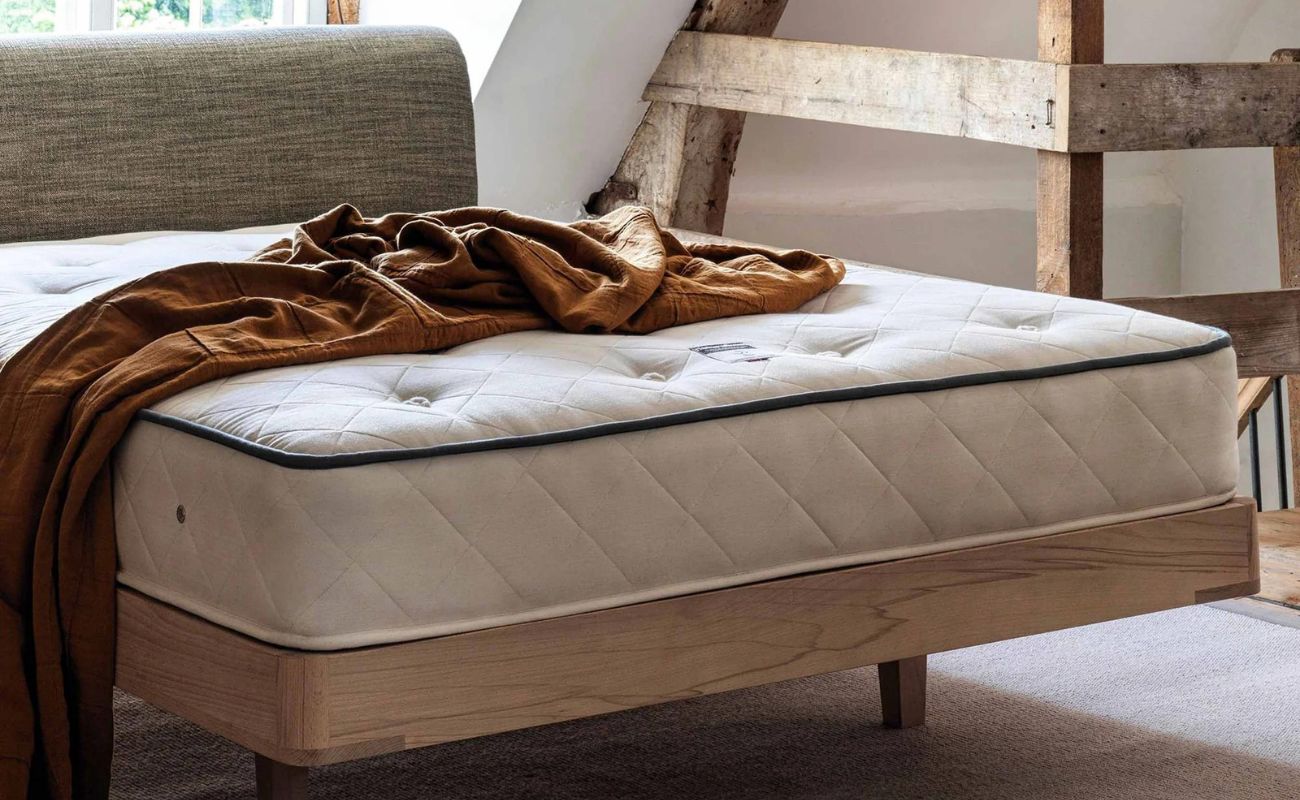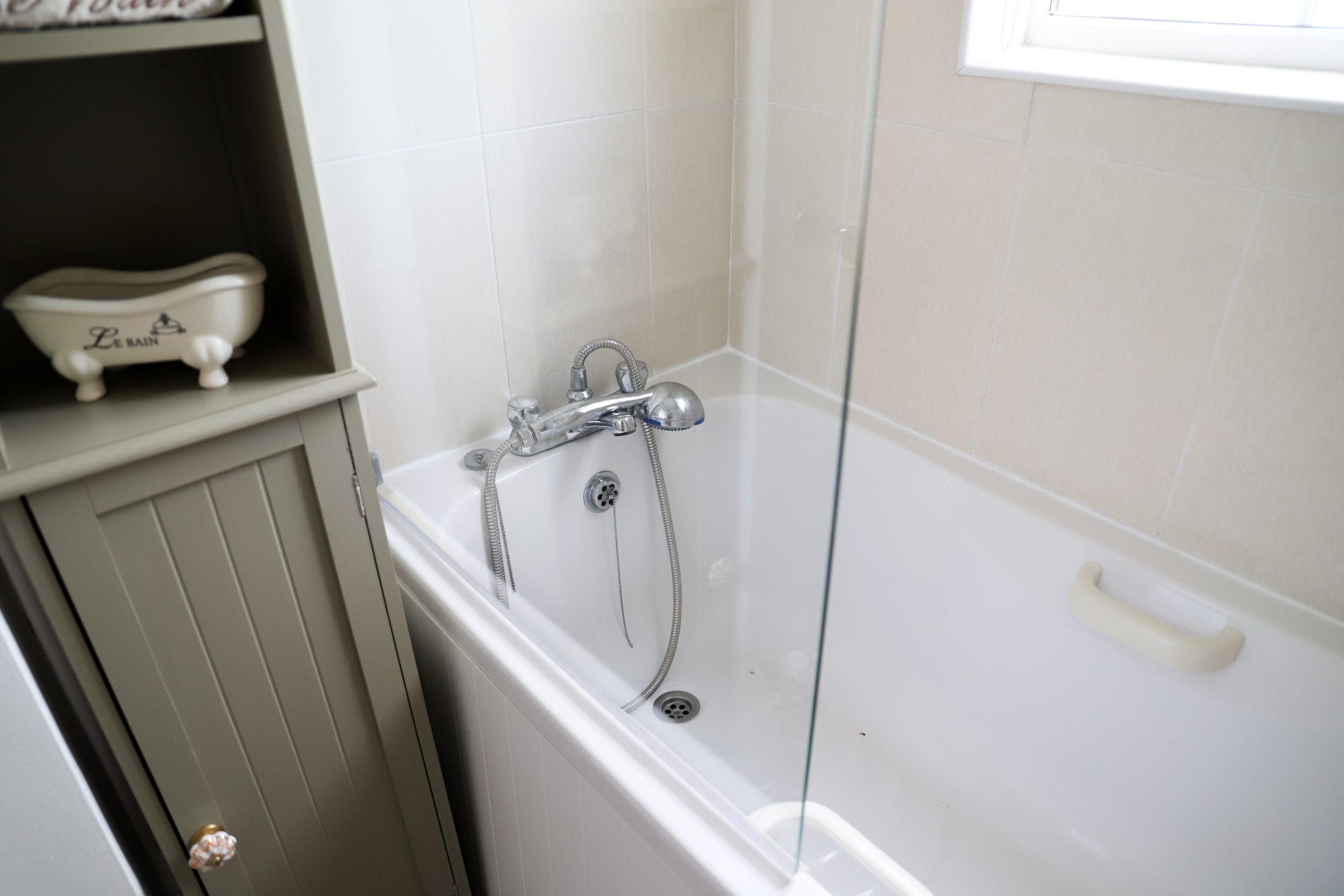Home>Furniture>Bedroom Furniture>Why Does My Mattress Hurt My Back


Bedroom Furniture
Why Does My Mattress Hurt My Back
Modified: January 6, 2024
Discover the reasons why your mattress may be causing back pain and find solutions to improve your sleep quality and comfort with our selection of bedroom furniture.
(Many of the links in this article redirect to a specific reviewed product. Your purchase of these products through affiliate links helps to generate commission for Storables.com, at no extra cost. Learn more)
Introduction
Have you ever woken up with a nagging back pain that just won’t go away? You are not alone. Many people suffer from back pain, and one of the potential culprits could be your mattress. Yes, you heard that right – your mattress might be the reason your back feels discomforted.
Choosing the right mattress is crucial for your overall well-being, especially if you are prone to back pain. A mattress that does not provide adequate support and comfort could lead to poor spinal alignment and contribute to or exacerbate back pain issues.
In this article, we will delve into the connection between mattresses and back pain. We will discuss the role of mattress firmness, the importance of proper spinal alignment, the influence of mattress materials, and the factors to consider to choose the right mattress for back pain relief. So, let’s dive in and discover the best ways to ensure a restful night’s sleep without waking up with a sore back.
Key Takeaways:
- Choose a mattress with the right firmness, materials, and support to alleviate back pain and promote proper spinal alignment for a restful night’s sleep.
- Consider your sleeping position, lifestyle factors, and additional accessories to complement your mattress choice and enhance back pain relief for overall well-being.
Read more: Why Does My Mattress Make My Back Hurt
Understanding Mattress-Back Pain Connection
When it comes to the connection between mattresses and back pain, there are a few key factors to consider. First and foremost, your mattress plays a significant role in supporting your spine during sleep. The right mattress should promote proper spinal alignment, keeping your spine in a neutral position. On the other hand, a mattress that lacks support can cause your spine to sink, leading to misalignment and putting pressure on your muscles, ligaments, and discs.
Another crucial aspect to understand is the impact of mattress firmness. Firmness levels can vary from soft to medium to firm. While personal preferences come into play, it is important to find a balance between comfort and support. A mattress that is too soft may not provide enough support, leading to spinal misalignment and back pain. Conversely, a mattress that is too firm can put excessive pressure on certain areas of your back, resulting in discomfort and disrupted sleep.
It is worth noting that individuals with different body types and sleep positions may require different levels of firmness. For example, side sleepers typically benefit from a slightly softer mattress to relieve pressure on their shoulders and hips. Conversely, back and stomach sleepers often find more comfort and support with a firmer mattress that keeps their spine properly aligned.
Additionally, the materials used in mattress construction can significantly impact back pain. Memory foam mattresses, known for their contouring properties, can provide excellent support and pressure relief, making them a popular choice for those with back pain. Latex mattresses, with their natural elasticity and responsiveness, can also offer adequate support and comfort.
Now that we understand the relationship between mattresses and back pain, let’s explore how different factors such as mattress firmness, spinal alignment, and materials play a role in alleviating or exacerbating back pain. By considering these factors when choosing a mattress, you can significantly improve your sleep quality and wake up without any back discomfort.
The Role of Mattress Firmness
When it comes to mattress firmness, finding the right balance is essential for optimal comfort and back pain relief. The firmness level refers to how soft or firm the mattress feels when you lie down on it. Different individuals have different preferences, but understanding the role of mattress firmness can guide you in making an informed decision.
Generally, mattresses are categorized into three firmness levels: soft, medium, and firm. Each level has its advantages and considerations, and the ideal firmness level depends on various factors such as body weight, sleep position, and personal preference.
A soft mattress, typically rated between 3-5 on the firmness scale, offers a plush and cushioned feel. It allows your body to sink deeper into the mattress, providing a contouring effect. Soft mattresses are often a good choice for side sleepers as they can alleviate pressure on the shoulders and hips. However, if you suffer from chronic back pain or require additional lumbar support, a soft mattress may not provide the necessary stability and spinal alignment.
A medium-firm mattress, rated around 5-7 on the firmness scale, strikes a balance between support and comfort. It offers a blend of softness and firmness, providing adequate support to keep your spine aligned while still contouring to your body’s natural curves. This level of firmness is typically suitable for a wide range of sleepers, including back, stomach, and combination sleepers.
On the other end of the spectrum, a firm mattress, rated 7-9 on the firmness scale, is characterized by its stiffness and minimal give. It provides excellent support for those who need more stability or suffer from back pain. A firm mattress helps distribute your body weight evenly, preventing your spine from sinking and promoting proper alignment. However, it may not be ideal for side sleepers as it can put excess pressure on the shoulders and hips.
It’s important to note that the ideal firmness level can vary based on your weight. Heavier individuals may find more comfort and support with a firmer mattress, while lighter individuals may prefer a softer mattress for enhanced pressure relief.
Ultimately, finding the right level of firmness is subjective. It’s crucial to try out different mattresses and assess how they feel to determine your personal comfort level. Many mattress retailers offer trial periods, allowing you to test their products at home for an extended period. This way, you can make an informed decision based on your own experience and comfort preferences.
Next, we’ll explore the importance of proper spinal alignment and mattress support in relation to back pain relief.
Proper Spinal Alignment and Mattress Support
Proper spinal alignment is crucial for alleviating back pain and ensuring a restful night’s sleep. When your spine is in its natural alignment, the muscles, ligaments, and discs in your back can relax and recover during sleep. A mattress that provides adequate support plays a vital role in achieving this proper alignment.
Support refers to how well a mattress maintains the natural curvature of your spine. When lying on your back, the mattress should support the natural curve of your lower back (lumbar region) and keep your spine straight. For side sleepers, the mattress should contour to the curves of your body, supporting the alignment of your shoulders and hips.
Without proper support, your spine can become misaligned, leading to discomfort and potential long-term issues. A mattress that is too soft may cause your lower back to sink, while a mattress that is too firm can create pressure points and push against your body’s natural curve.
To ensure proper spinal alignment, look for a mattress that adapts to your body’s shape and provides support where you need it most. Memory foam mattresses are known for their ability to contour to the body, offering targeted support and relieving pressure points. These mattresses conform to the natural curvature of your spine, promoting proper alignment and reducing the risk of back pain.
In addition to the mattress itself, the support system plays a crucial role. If you prefer a traditional innerspring mattress, opt for one with a high-quality coil system that provides adequate support and minimizes motion transfer. Hybrid mattresses, which combine coils with foam or latex layers, can also offer excellent support and cushioning.
Keep in mind that your body weight and sleep position can influence the level of support you require. Heavier individuals may need a firmer mattress to prevent excessive sinking, while lighter individuals may find more comfort with a softer mattress that provides gentle support.
Remember, proper spinal alignment is not only essential for relieving back pain but also for improving overall sleep quality. By selecting a mattress that supports your spine and maintains its natural curves, you can wake up feeling refreshed and free from any lingering back discomfort.
In the next section, we will explore the impact of mattress materials on back pain relief.
Mattress Materials and Back Pain
When it comes to choosing a mattress that can alleviate or prevent back pain, the materials used in its construction play a significant role. Different mattress materials offer varying levels of support, comfort, and pressure relief, making certain options more suitable for individuals with back pain.
One popular mattress material known for its ability to relieve back pain is memory foam. Memory foam mattresses contour to the shape of your body, distributing weight evenly and alleviating pressure points. This material provides excellent support by conforming to the natural curvature of your spine, promoting proper alignment. Memory foam also absorbs movement, reducing motion transfer and allowing for undisturbed sleep. Overall, memory foam mattresses can help relieve back pain by providing the necessary support and cushioning for your body.
Latex mattresses are another option worth considering. Made from the sap of rubber trees, latex mattresses offer a combination of support, responsiveness, and durability. Latex naturally contours to your body, ensuring proper spinal alignment and cushioning your pressure points. It provides a balanced level of comfort and support. Additionally, latex is known for its breathability, keeping you cool throughout the night.
Innerspring mattresses, consisting of metal coils, have been a popular choice for many years. However, they may not be the best option for individuals with back pain. Innerspring mattresses tend to have a firmer feel and can create pressure points, especially if the coils are not adequately cushioned. While some innerspring mattresses offer additional foam or padding layers, it’s essential to choose one that provides sufficient support and cushioning to prevent back pain.
Hybrid mattresses have gained popularity due to their combination of materials. These mattresses typically feature a pocketed coil support system combined with foam or latex layers. The coils offer support and minimize motion transfer, while the foam or latex layers provide comfort and pressure relief. Hybrid mattresses can be an excellent option for those seeking the benefits of different materials in one mattress.
Ultimately, the best mattress material for back pain depends on your personal preferences and needs. Consider factors such as the level of support, pressure relief, and comfort provided by different materials when making your decision. Additionally, keep in mind that mattress preferences can be subjective, so it’s essential to test out different mattresses and determine which material works best for you.
In the next section, we will explore critical factors to consider when selecting a mattress for back pain relief.
Ensure your mattress provides proper support for your back. Look for a medium-firm mattress to maintain natural spine alignment and reduce back pain.
Read more: Why Does My Recliner Hurt My Back
Choosing the Right Mattress for Back Pain Relief
Now that we understand the importance of mattress firmness, spinal alignment, and materials, let’s explore the key factors to consider when selecting a mattress for back pain relief.
1. Personal Preference: No two individuals are alike, and what works for someone else may not work for you. Consider your preferred sleeping position, body weight, and any specific requirements or sensitivities you may have. Take advantage of mattress trials and test different options to determine your personal comfort level.
2. Support and Alignment: Look for a mattress that offers adequate support and promotes proper spinal alignment. It should keep your spine in a neutral position, whether you sleep on your back, side, or stomach. Remember that different firmness levels may be suitable for different sleep positions.
3. Pressure Relief: Back pain is often associated with pressure points. Find a mattress with materials that offer good pressure relief, such as memory foam or latex. These materials conform to your body and distribute weight evenly, reducing pressure on specific areas.
4. Durability: Consider the longevity and durability of the mattress. A high-quality mattress should provide consistent support and comfort for years to come, helping to prevent recurring back pain issues. Look for reputable brands and read customer reviews to gauge the durability of different models.
5. Motion Isolation: If you sleep with a partner, consider a mattress with good motion isolation. This feature ensures that any movement on one side of the bed does not disturb the other person. Look for memory foam or hybrid mattresses that excel in minimizing motion transfer.
6. Temperature Regulation: If you tend to sleep hot, consider a mattress with cooling properties. Look for mattresses with breathable materials, such as latex or open-cell memory foam, which allow for better airflow and heat dissipation.
7. Additional Features: Some mattresses come with additional features that may enhance your comfort and back pain relief. These features could include adjustable firmness levels, lumbar support zones, or targeted pressure relief in specific areas of the mattress. Assess your specific needs and preferences to determine if any of these features would be beneficial.
Remember that investing in a high-quality mattress is an investment in your health and well-being. Take the time to research and compare different options, and do not hesitate to seek advice from mattress professionals or healthcare providers if needed.
By considering these factors and understanding your own needs, you can make an informed decision and choose the right mattress that will provide the necessary support, comfort, and relief for your back pain.
In the next section, we will discuss the impact of sleeping positions on mattress selection for back pain relief.
Sleeping Positions and Mattress Selection
Did you know that your sleeping position can influence the type of mattress that works best for you, especially when it comes to alleviating back pain? The way you sleep affects the alignment of your spine and the distribution of pressure on your body. Let’s explore how different sleeping positions relate to mattress selection for back pain relief.
1. Back Sleepers: If you sleep on your back, finding a mattress that provides proper support for your lower back is crucial. Look for a medium-firm to firm mattress that keeps your spine aligned without causing excessive pressure on other areas. A mattress with a slightly softer top layer can offer some cushioning for the curves of your body while still maintaining support.
2. Side Sleepers: Side sleepers typically require a mattress that offers a balance between support and pressure relief. Look for a medium to medium-soft mattress that allows your hips and shoulders to sink slightly, aligning your spine properly. Memory foam or latex mattresses work well for side sleepers as they contour to your body’s curves and relieve pressure points.
3. Stomach Sleepers: Sleeping on your stomach can put strain on your neck and back due to the position of your head and the arching of your spine. For stomach sleepers, a medium-firm to firm mattress is recommended to prevent excessive sinking and maintain proper alignment. Consider using a pillow under your pelvis to help keep your spine in a more neutral position.
4. Combination Sleepers: If you tend to change positions throughout the night, it’s important to choose a versatile mattress that can accommodate different sleeping postures. Look for a mattress with medium firmness that offers a good balance of support and pressure relief, allowing for comfortable transitions between positions.
Keep in mind that these guidelines are general and may vary depending on your body weight and personal preferences. Additionally, consider the presence of any underlying back conditions or injuries that may require additional support or recommendations from a healthcare professional.
Regardless of your sleeping position, it’s essential to ensure that your chosen mattress maintains proper spinal alignment and provides the necessary support and pressure relief for your body.
In the final section, we will discuss additional factors to consider for back pain relief beyond mattress selection.
Additional Factors to Consider for Back Pain Relief
While selecting the right mattress for back pain relief is essential, there are other factors to consider that can contribute to a more comfortable and pain-free sleep experience. Let’s explore some additional factors that can help alleviate back pain.
1. Pillow Support: Along with a suitable mattress, using the right pillow can enhance spinal alignment and provide additional support for your neck and head. Choose a pillow that keeps your neck in line with your spine, whether you sleep on your back, side, or stomach. Memory foam, latex, or adjustable pillows can offer personalized support and alleviate any strain on your neck and upper back.
2. Sleep Accessories: Depending on your specific needs, you may benefit from sleep accessories designed to alleviate back pain. For example, lumbar support pillows or mattress toppers can provide extra cushioning and support to the lower back. Additionally, using a body pillow or a knee pillow while sleeping on your side can help maintain proper alignment and alleviate pressure on your hips and lower back.
3. Regular Exercise and Stretching: Engaging in regular exercise and stretching routines can strengthen your back muscles, improve flexibility, and alleviate back pain. Incorporate exercises that target the core muscles, such as planks or bridges, as well as exercises that promote spinal mobility, like cat-cow stretches or gentle yoga poses. Consult with a healthcare professional or a qualified fitness instructor for guidance on exercises suitable for your specific condition.
4. Ergonomic Sleep Positions: Besides choosing the right mattress and pillow, adopting proper sleep positions can also help relieve back pain. For back sleepers, placing a pillow under the knees can help maintain the natural curve of the lower back. Side sleepers can benefit from placing a pillow between their knees to promote proper alignment of the hips and spine. Stomach sleepers may try sleeping with a thin pillow or without a pillow to minimize strain on the neck and back.
5. Lifestyle Factors: Make sure to consider lifestyle factors that can impact your back health. Maintaining a healthy weight, practicing good posture during daily activities, and avoiding extended periods of sitting or standing can all contribute to reducing stress on your back. Additionally, managing stress levels and promoting relaxation before bedtime can help minimize muscle tension and promote better sleep quality.
Remember that addressing back pain requires a holistic approach. While a suitable mattress is a crucial component, incorporating these additional factors can enhance your overall well-being and contribute to long-term back pain relief.
Now that we have explored various aspects of mattress selection, sleep positions, and lifestyle factors, let’s conclude and summarize the key takeaways.
Conclusion
Choosing the right mattress is paramount for alleviating and preventing back pain. Your mattress plays a crucial role in providing the necessary support, maintaining proper spinal alignment, and ensuring a restful night’s sleep. By understanding the connection between mattresses and back pain, considering factors like firmness, materials, and sleeping positions, and taking into account additional factors for back pain relief, you can make an informed decision and select a mattress that best suits your needs.
Remember that mattress firmness should be balanced to provide both support and comfort. Consider your body weight, preferred sleeping position, and any specific requirements you may have to find the optimum firmness level. Additionally, pay attention to how the mattress supports your spine, promoting proper alignment and minimizing pressure points. Materials such as memory foam and latex can contour to your body and offer excellent support for back pain relief.
Take into account your sleeping position and choose a mattress that accommodates your specific needs. Back sleepers may benefit from medium-firm to firm mattresses to support their lower back, while side sleepers may find more comfort with medium to medium-soft mattresses for better pressure relief. Stomach sleepers should opt for firm mattresses to maintain proper spinal alignment.
Don’t overlook the importance of other factors for back pain relief. Using the right pillow for neck and head support, incorporating regular exercise and stretching to strengthen your back muscles, and practicing proper sleep and lifestyle habits can all contribute to a healthier back and more restful sleep.
In conclusion, finding the right mattress for back pain relief requires careful consideration of various factors. By choosing a mattress that provides proper support, promotes spinal alignment, and caters to your sleeping position, you can significantly reduce discomfort and improve the quality of your sleep. Remember, investing in a high-quality mattress is an investment in your well-being, ensuring that you wake up refreshed, rejuvenated, and free from back pain.
Frequently Asked Questions about Why Does My Mattress Hurt My Back
Was this page helpful?
At Storables.com, we guarantee accurate and reliable information. Our content, validated by Expert Board Contributors, is crafted following stringent Editorial Policies. We're committed to providing you with well-researched, expert-backed insights for all your informational needs.
